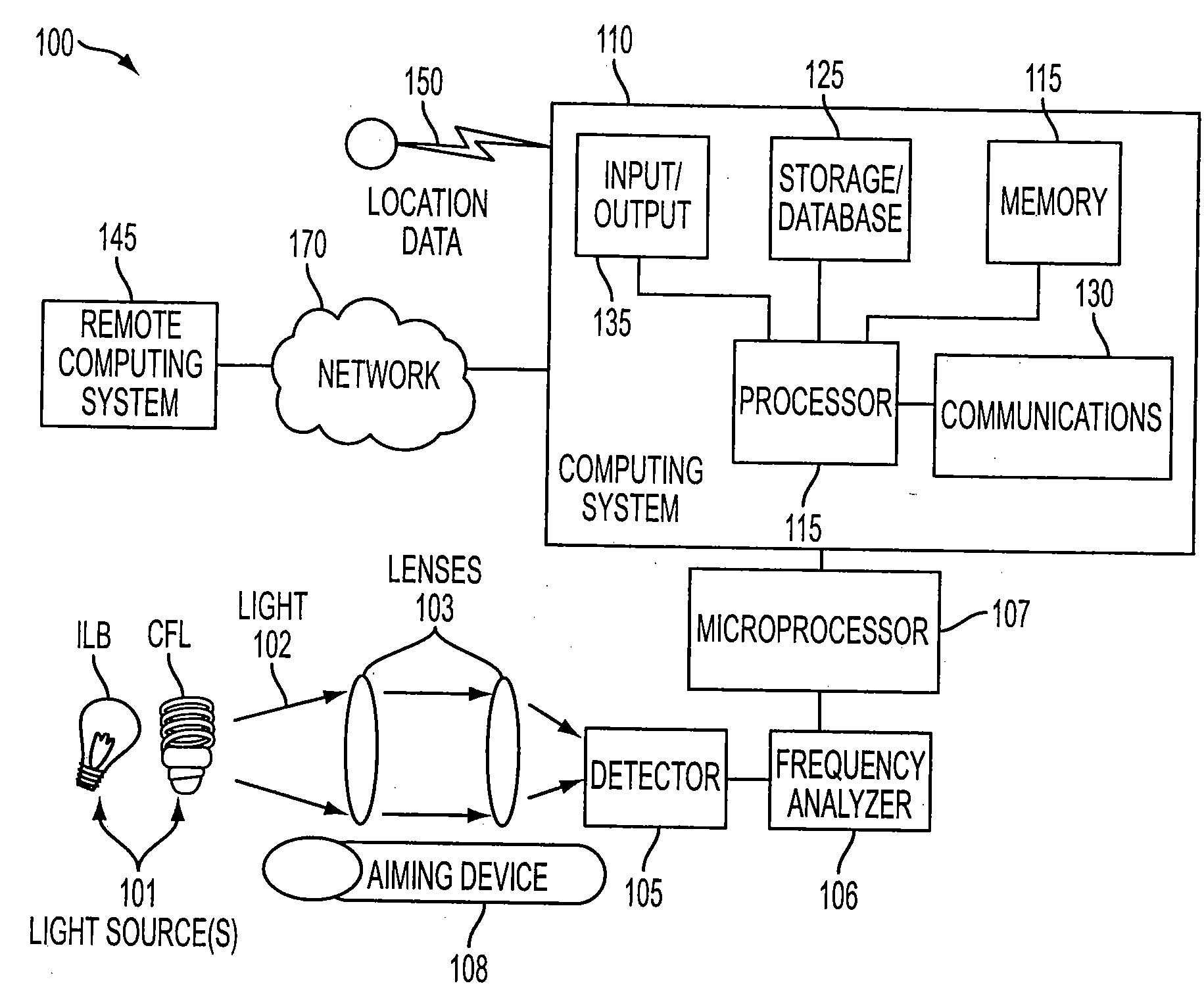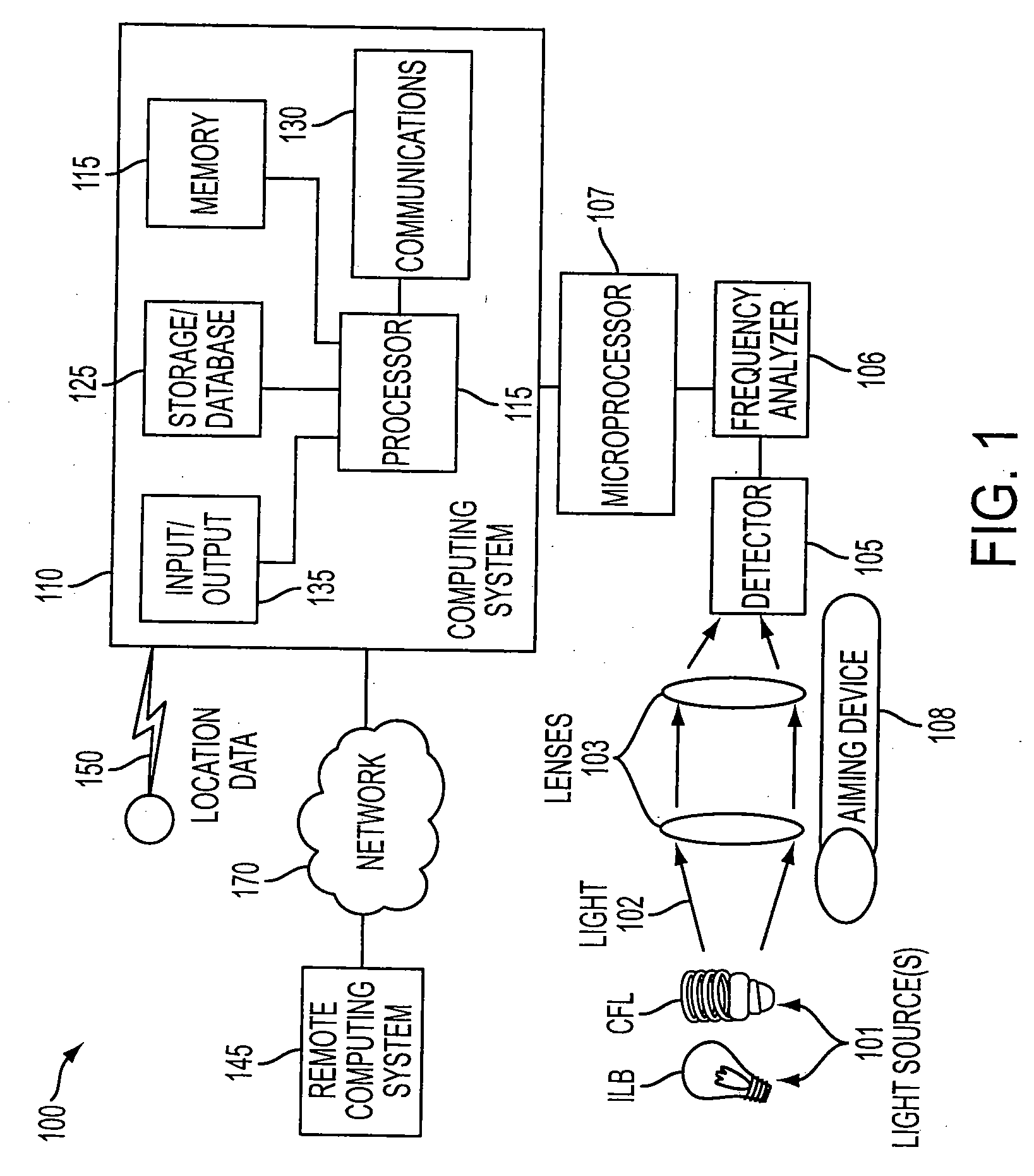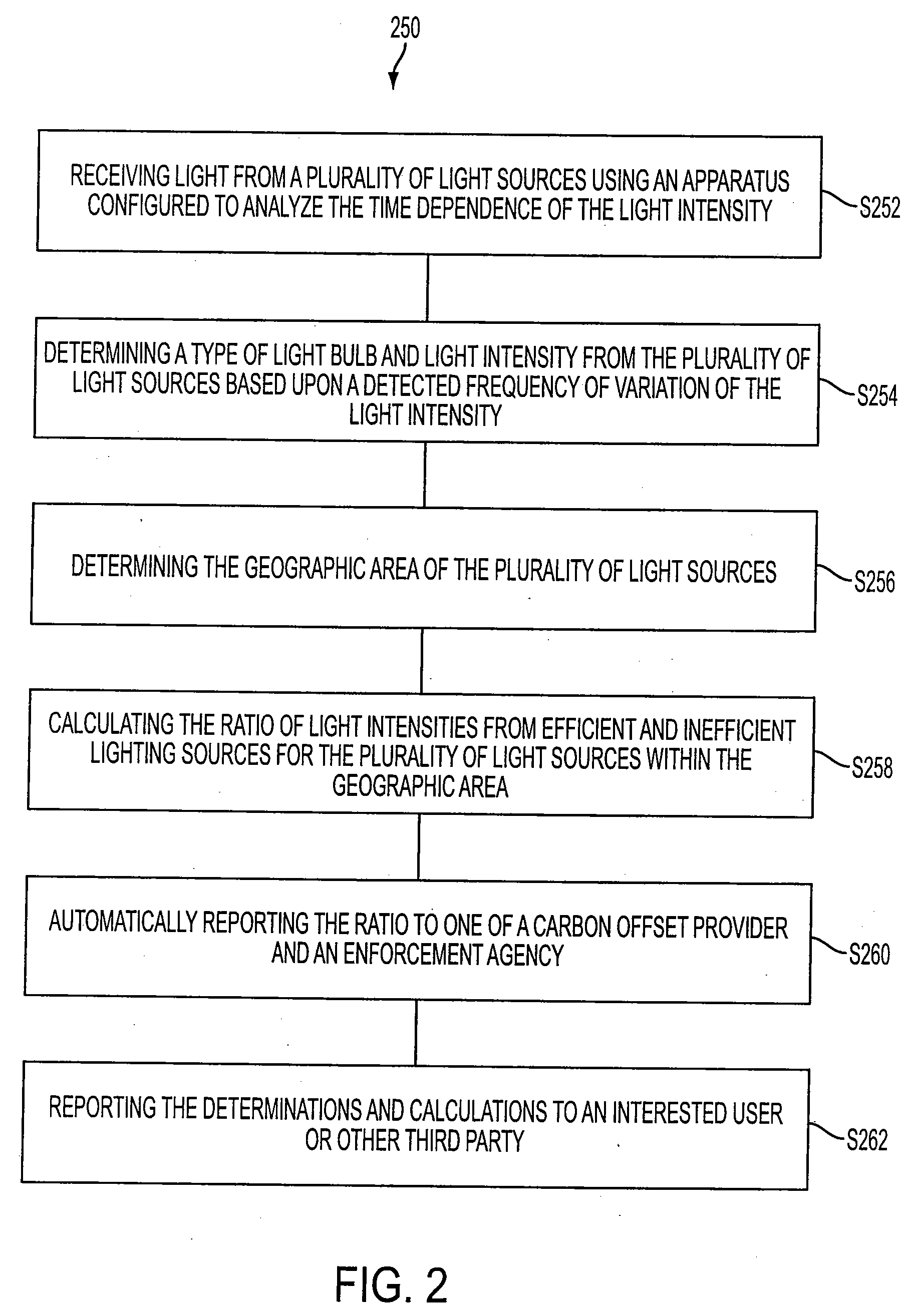Method and apparatus for failure detection in lighting systems
a technology for failure detection and lighting systems, applied in the field of remote detection of light sources, can solve the problems of difficult or impossible to tell the difference through remote visual inspection between the types of bulbs, and achieve the effect of reducing electric energy use and determining the bulb type quickly and easily
- Summary
- Abstract
- Description
- Claims
- Application Information
AI Technical Summary
Benefits of technology
Problems solved by technology
Method used
Image
Examples
Embodiment Construction
[0017]The electricity supplied by power companies reverses polarity typically 110 or 120 times per second (supply of 60 Hz in US and 50 Hz in Europe), fluorescent lights turn on and off at that rate, which may cause a change in intensity or flicker. Incandescent lights do not produce this flicker because the light is produced by a hot glowing wire. This wire is not affected by electrical polarity switches, since the wire stays hot and glows steadily. Fluorescent-type lights and LEDs with high-efficiency ballasts may have a flicker rate of 20 kHz to 60 kHz.
[0018]FIG. 1 is a schematic illustration of a system 100 for determining a type of light source from a plurality of light sources 101 using time domain resolution in accordance with an embodiment of the present invention. System 100 uses these innate characteristics of differing light sources 101 to remotely ascertain the type of light source.
[0019]As shown in FIG. 1, lens or lenses 103 on a detector 105 may be used to focus light ...
PUM
 Login to View More
Login to View More Abstract
Description
Claims
Application Information
 Login to View More
Login to View More - R&D
- Intellectual Property
- Life Sciences
- Materials
- Tech Scout
- Unparalleled Data Quality
- Higher Quality Content
- 60% Fewer Hallucinations
Browse by: Latest US Patents, China's latest patents, Technical Efficacy Thesaurus, Application Domain, Technology Topic, Popular Technical Reports.
© 2025 PatSnap. All rights reserved.Legal|Privacy policy|Modern Slavery Act Transparency Statement|Sitemap|About US| Contact US: help@patsnap.com



